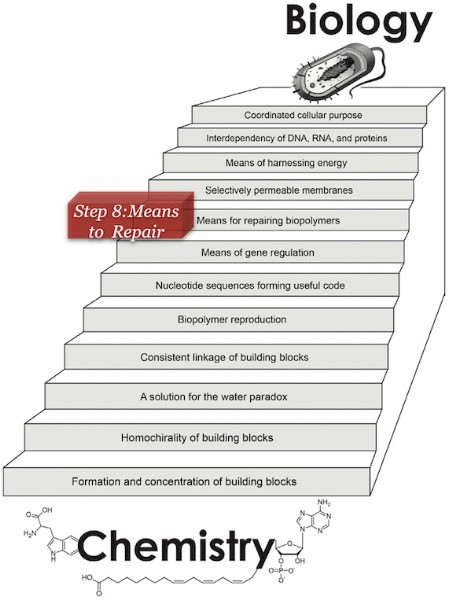Every home, car or PC owner knows the need for maintenance; that is, if they want their stuff to be useful for a good while. The need for maintenance applies to many things in life beyond machinery: relationships, businesses and online persona all need constant attention to address problems while they’re small. The same is true for your body’s one trillion cells. Repair is needed since no maintenance equals death.

Evolutionists dream that life emerged with short RNA strands growing quickly into DNA, which somehow create more code for life. They forget about the need to maintain RNA’s useful contents. Dr. Change L. Tan describes this challenge: “time is subversive, intent on destroying (not accumulating) information. Information generally degrades over time. For example, what fraction of literary works have survived from ancient Persia? … Maintenance of information over time requires targeted application of energy. Given a focused application of human energy, more literary works from ancient Persia could have survived. For abiogenesis, maintenance of information over deep time in a prebiotic world would require very specific application of energy to preserve the information despite natural degradative processes.” That’s a mouthful, so let’s break that down.
RNA is highly subject to decay. As a single strand, it is more fragile than double-stranded DNA. Even one water molecule destroys RNA. Despite the cell’s protective walls, many forces damage RNA and DNA’s makeup, such as radiation (especially heat), oxidation, pathogens, or foreign chemicals. A doctor told me I produce over 1,000 cancer cells every day due to the causes above which mutate the genetics. Fortunately, God gave us specialized machines to conduct “base and nucleotide excision repair” and “mismatch repair” on DNA.
Here's a simple picture of how these machines work. You’ve seen a document copied and re-copied by a photocopier. Letters get fuzzy, and spurious dots appear. When DNA copies, machines sharpen every letter (nucleotide) and remove spurious dots (bases), ensuring a faithful clone. Without these repair mechanisms, you face “premature aging, increased risk of cancer, neurologic defects, and growth retardation.”

Evolutionists are in a bit of a bind over this critical function. They need errors in RNA’s copying process, so random beneficial mutations appear. Turns out that banking on errors (lies) to build your case doesn’t work out as expected. In 1971, Nobel Laureate Manfred Eigen showed that prebiotic RNA strands are limited by their error rate while copying; too many errors quickly lead to disaster over time. As Dr. Tan points out, this is Eigen’s paradox: “a self-replicating molecule faces a practical size limit of about 100 nucleotides unless there are error-correction systems, but the error-correction systems themselves must be coded in molecules that are substantially longer than the practical limit.” Keep in mind, the shortest known living DNA has 100,000 nucleotides. Thus, their approach is hopelessly broken.
Just think on the words “maintenance” and “repair”. Both imply restoring a thing to its set function, which requires knowledge of its design and purpose. The presence of even one repair mechanism is prima facie evidence for our Creator and Designer, Who healeth all thy diseases; Who daily loadeth us with benefits; and will preserve me unto His heavenly kingdom. He is the Preserver of men even in little ways!
Source: Dr. Change Laura Tan and Rob Stadler, The Stairway To Life: An Origin-of-Life Reality Check, Evorevo Books, 2020, chapter 14; ref. to shortest DNA, p.103.
Like this? Consider sharing it to Facebook by clicking the linked icon below.
